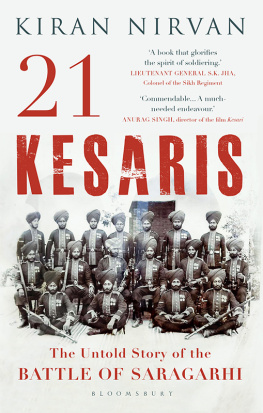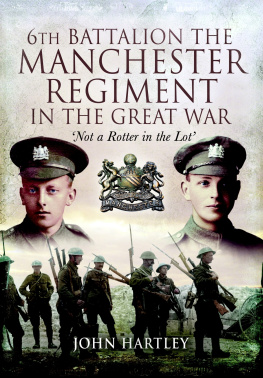
This edition published in 2014 by
Pen & Sword Military
An imprint of
Pen & Sword Books Ltd
47 Church Street
Barnsley
South Yorkshire
S70 2AS
This book was first published as The Fife and Forfar Yeomanry
by John Murray, Ablemarle Street, London, 1921.
Copyright Coda Books Ltd.
Published under licence by Pen & Sword Books Ltd.
ISBN: 9781473823327
EPUB ISBN: 9781473851139
PRC ISBN: 9781473851290
A CIP catalogue record for this book is available from the British Library
All rights reserved. No part of this book may be reproduced or transmitted in any form or by any
means, electronic or mechanical including photocopying, recording or by any information storage
and retrieval system, without permission from the Publisher in writing.
Printed and bound in England
By CPI Group (UK) Ltd, Croydon, CR0 4YY
Pen & Sword Books Ltd incorporates the imprints of Pen & Sword Aviation, Pen & Sword Family
History, Pen & Sword Maritime, Pen & Sword Military, Pen & Sword Discovery, Pen & Sword
Politics, Pen & Sword Atlas, Pen & Sword Archaeology, Wharncliffe Local History, Wharncliffe
True Crime, Wharncliffe Transport, Pen & Sword Select, Pen & Sword Military Classics, Leo
Cooper, The Praetorian Press, Claymore Press, Remember When, Seaforth Publishing and
Frontline Publishing
For a complete list of Pen & Sword titles please contact
PEN & SWORD BOOKS LIMITED
47 Church Street, Barnsley, South Yorkshire, S70 2AS, England
E-mail:
Website: www.pen-and-sword.co.uk
CONTENTS
FOREWORD
M AJOR OGILVIE has done me the honour of asking me to write a short preface to a work which to me is of peculiar interest.
To write a preface - and especially a short one - is a somewhat difficult task, but my intense pride in, and admiration for, the part played by the Battalion with which the gallant author was so long and honourably associated must be my excuse for undertaking to do my best.
From his stout record as a soldier the authors qualifications to write this history are undoubted. His readers will be able to follow from start to glorious finish of the Great War the fortunes of that gallant little band of Fife and Forfar Yeomen who ultimately became the 14th (Fife and Forfar Yeomanry) Battalion The Royal Highlanders.
There was little of moment in the operations of the Egyptian Expeditionary Force in which this unit did not take part. In divers theatres of war they answered the call of Empire - from Gallipoli to Jerusalem, from Jerusalem to France - ever upholding the honour of their King and Country and the best traditions of the British Army.
No matter what by-path of the Great War they trod they bore themselveswith the undaunted spirit of their forefathers.
The experiences of the Battalion were so full of interest as to seem well worth placing on record - quite apart from the military importance of the operations in which they were concerned.
The ordinary reader must consider the conditions under which the work of this unit was carried out - often under a burning sun and again in bitter cold, mud and torrential rain - conditions which might well appal the stoutest heart, but here I note that the gallant author, as I expected, makes light of the many hardships and vicissitudes that he and his comrades were called upon to endure.
Again, when we consider how these heroes first entered the lists as cavalry, were then called upon to serve as dismounted cavalry, and finally as infantrymen, it surely speaks highly for that will to win that they had not long before the cessation of hostilities died of a broken heart!
Many a time during the two years that I had the honour to command the 74th (Yeomanry) Division both in Palestine and France, I noted - not without a feeling of intense pride - the cheery never-say-die spirit which pervaded all ranks of this splendid Battalion.
No matter what task was set them - no matter what the difficulties and privations to be encountered - all was overcome by that unfaltering determination and unswerving loyalty which carried them triumphant wherever the fates called them.
In conclusion of these few poor remarks of mine, let me congratulate the author on his story. If others read it with the same interest and enjoyment with which it has filled me, I can only think that the authors labours have not been in vain.
Further, may these remarks go forth, not only as a token to my old friends of the 14th Battalion The Royal Highlanders, of the admiration, affection, and gratitude of their old Commander, but to the whole of Scotland as a tribute to the memory of those good and gallant comrades of the Broken Spur whom we left behind in foreign lands.
ERIC S. GIRDWOOD,
(late) Major-General,
Commanding 74th (Yeomanry) Division.
PORTSMOUTH,
20th August, 1921
INTRODUCTION
T HIS SHORT HISTORY, written by request, was started shortly after the Regiment was disbanded. For the delay in publishing it, I must plead the great mass of inaccuracies which had to be corrected and verified, entailing a considerable amount of correspondence and consequent lapse of time. It has been compiled from Official Diaries and Forms, and from a Diary kept by Lieut.-Colonel J. Younger, D.S.O., without whose assistance it would never have been completed.
It will, however, recall to the readers mind the strenuous and eventful days we spent together in a regiment of whose history we are all so justly proud, and whose career now as a Yeomanry Regiment is ended, and it will recall the gallant fellows with whom we served and many a gallant deed.
To the glorious memory of those whose graves lie in a foreign land, I humbly dedicate this book.
D. DOUGLAS OGILVIE.
April, 1920.

OFFICERS AT FAKENHAM, 1915.
(Left to right) - Lt. Smith, Lt. Rigg, Lt. Hutchison, Lt. Herdman.
Lt. Gray, Lt. Stewart, Lt. Marshall, Lt. Lindsay, Lt. Robertson, Capt. Osborne, Lt. Don, Lt. Cummins, Capt. Mitchell, Capt. Ogilvie. Capt. Tuke, Major De Pre, Major Gilmour, Lt.-Col. Mitchell, Capt. Lindsay, Major Younger, Major Nairn.
Lt. Nairn, Lt. Andrew, Lt. Sir W. Campbell, Lt. Inglis.
- CHAPTER I
AT HOME - 1914-1915
A UGUST 4TH, 1914, MARKS the end and also the beginning of two great epochs in the history of every Territorial Unit. It marked the close of our peace training and the beginning of thirteen months strenuous war training for the thirty-seven months which we were to spend on active service abroad.
The Fiery Cross which blazed across the entire Continent caught most people unawares and unprepared - but not so our headquarters. Our mobilization papers had already been made out and were despatched immediately on the outbreak of war. Each one of us was bidden to report forthwith to his Squadron Headquarters, and while we kicked our heels there, officers were scouring the country for horses. Soon these came in of every sort and shape, and in a weeks time the Regiment was concentrated at Blairgowrie.
The headquarters of the Regiment was at Kirkcaldy, the four Squadrons A, B, C, and D having their headquarters respectively at Cupar, Dunfermline, Dundee, and Forfar. The recruiting area comprised the counties of Fife, Forfar, Kinross, and Clackmannan, and there was also a troop in Stirlingshire within a few miles of Loch Lomond. The rest of the Highland Mounted Brigade, to which the Regiment belonged, was pure Highland, consisting of two regiments of Lovats Scouts, the Inverness Battery, R.H.A., and a T. and S. Column and Field Ambulance hailing also from Inverness. On changing to War Establishment, D Squadron dropped out and was divided amongst A, B, and C, with the exception of Lieut.-Colonel King who went to Remounts, and Captain Jackson who became Staff Captain on the newly formed Brigade Staff.
Next page












